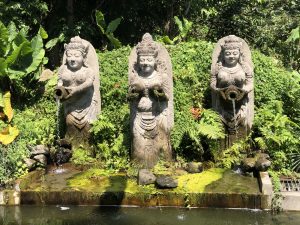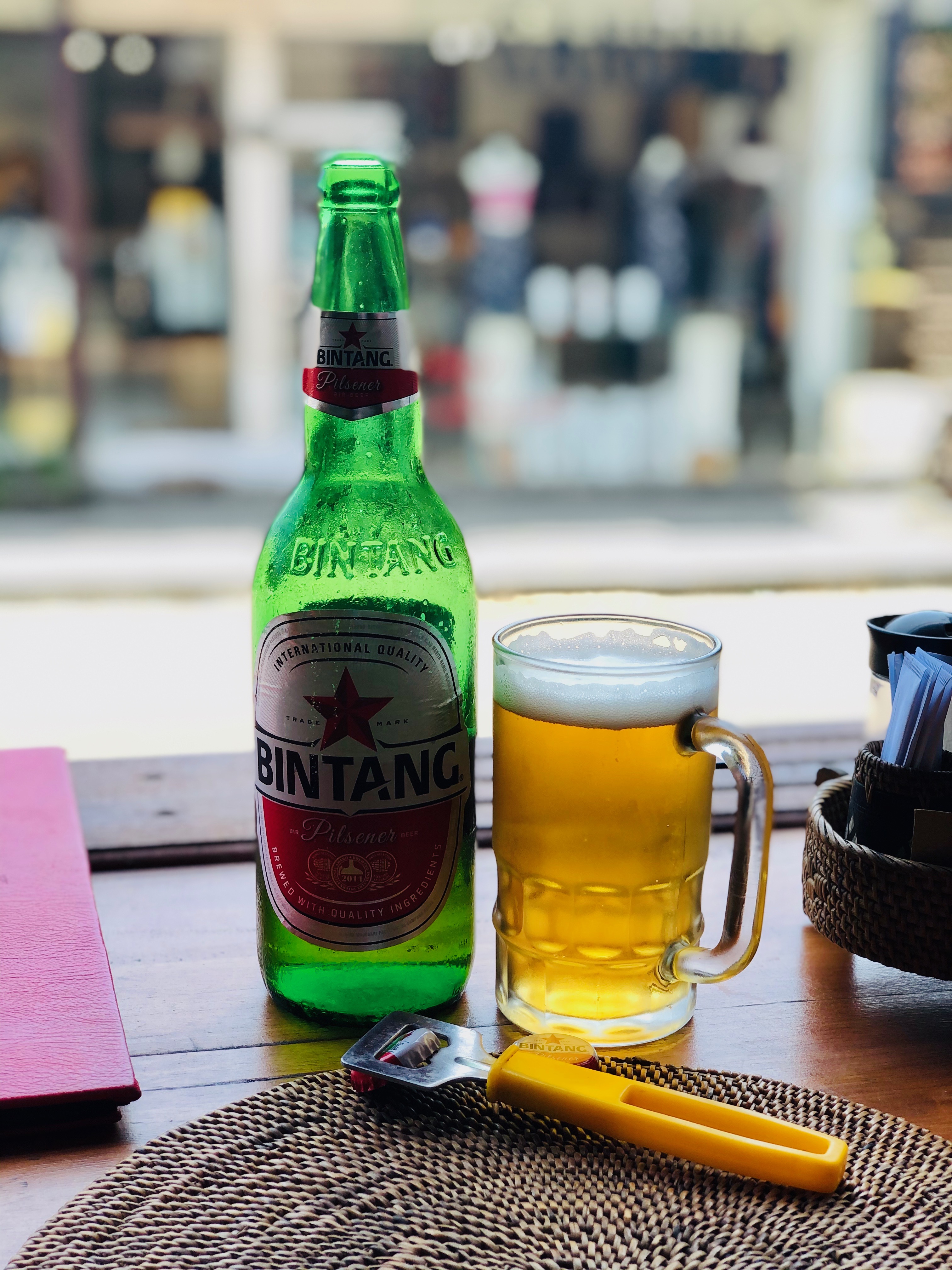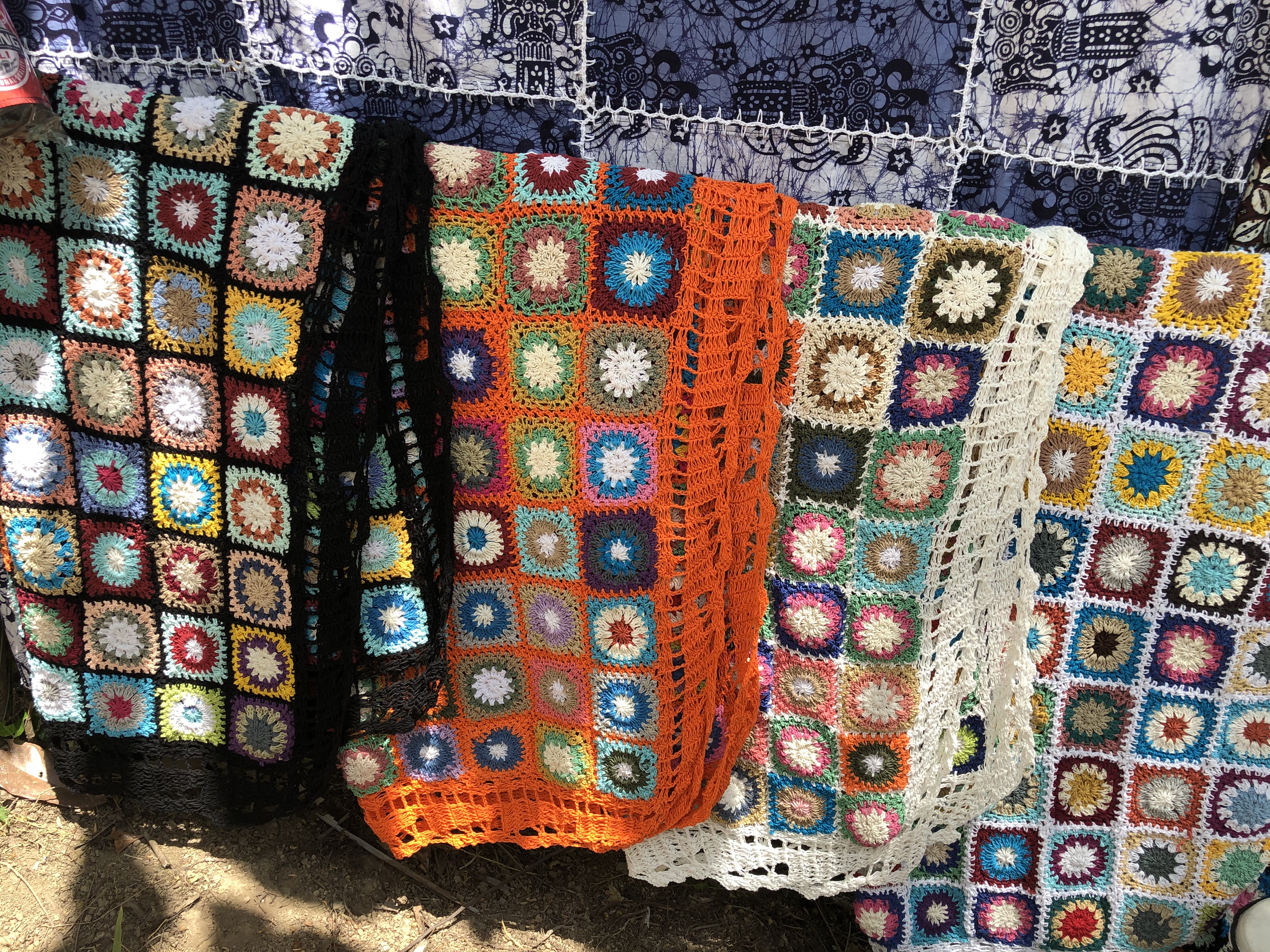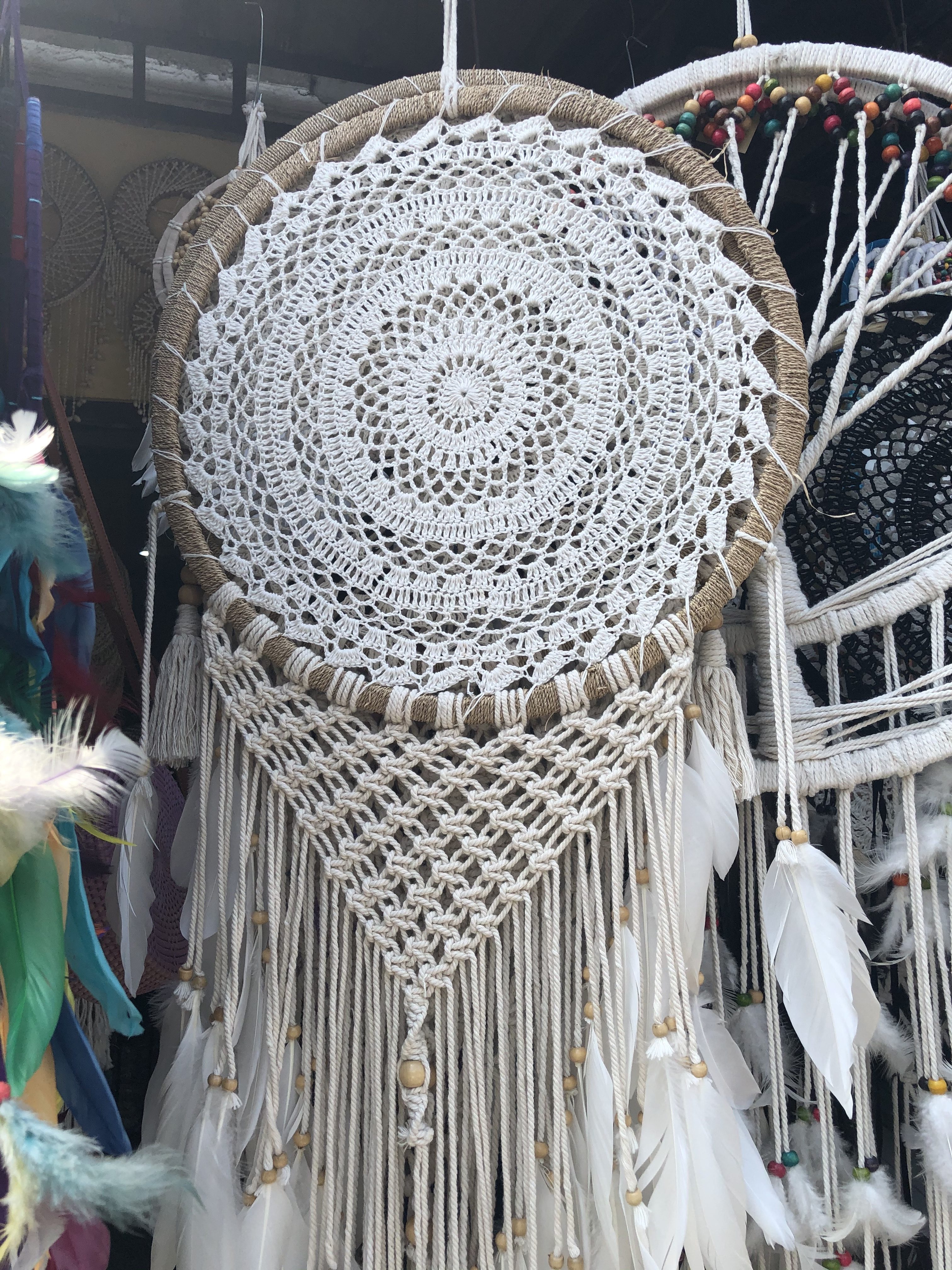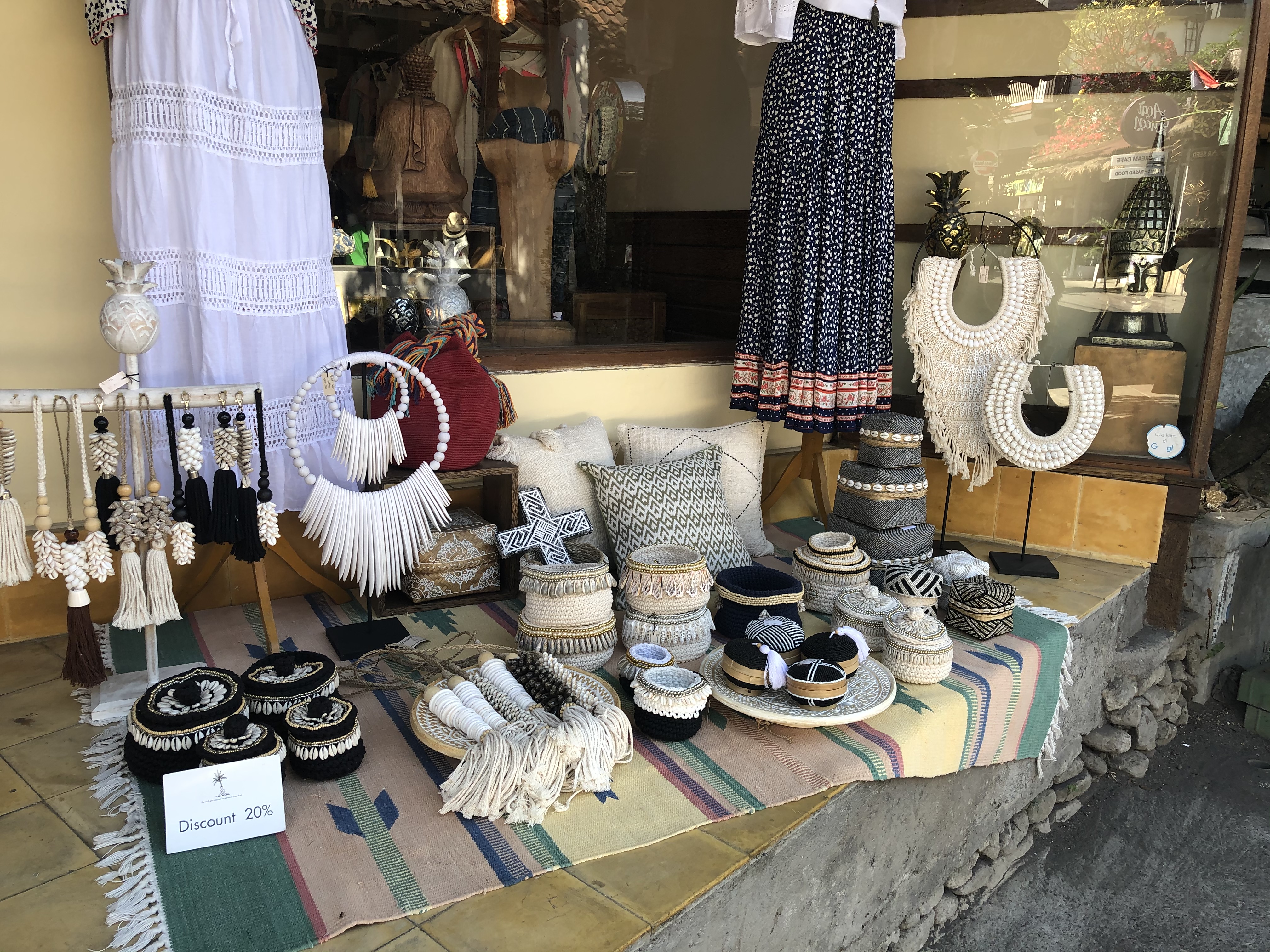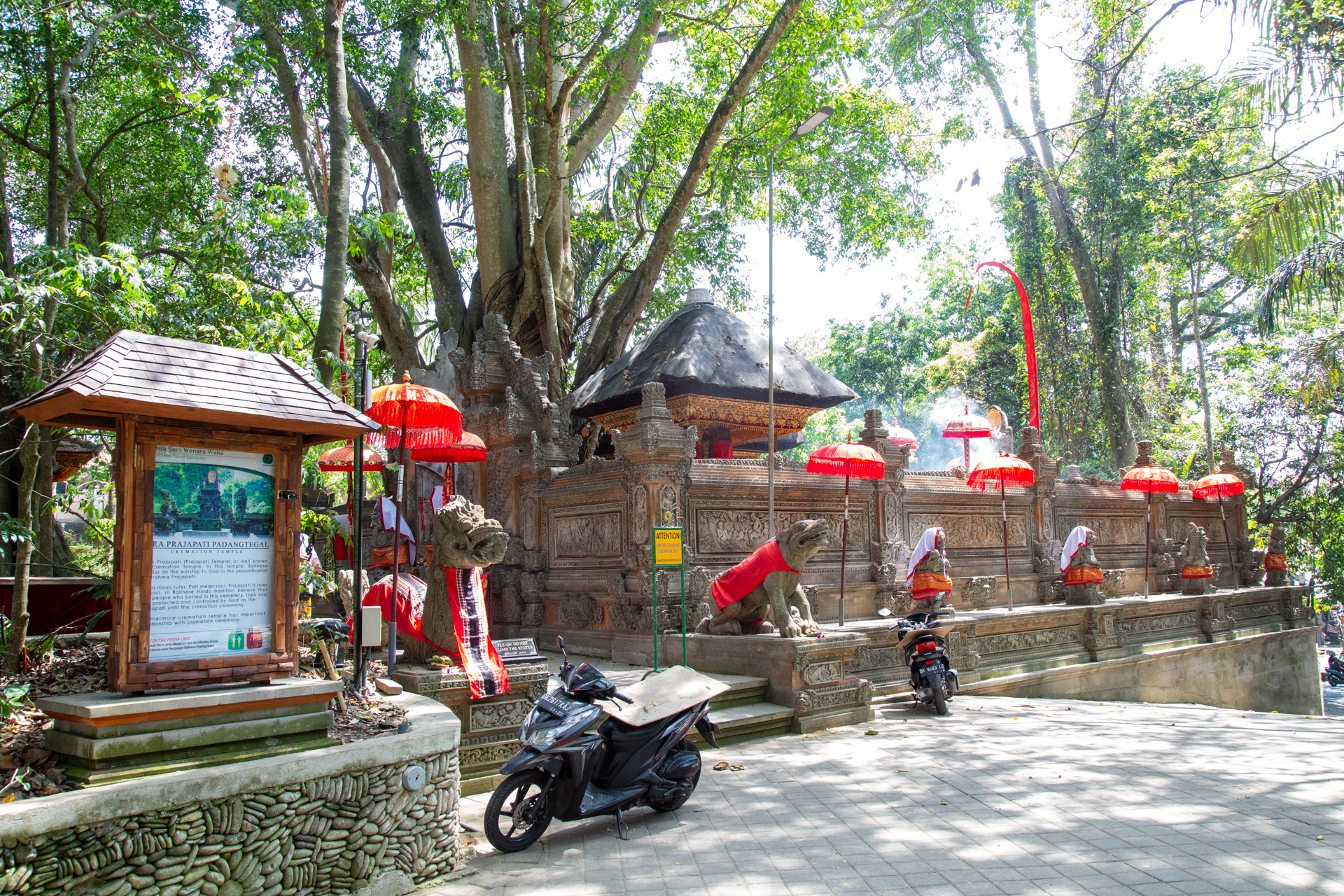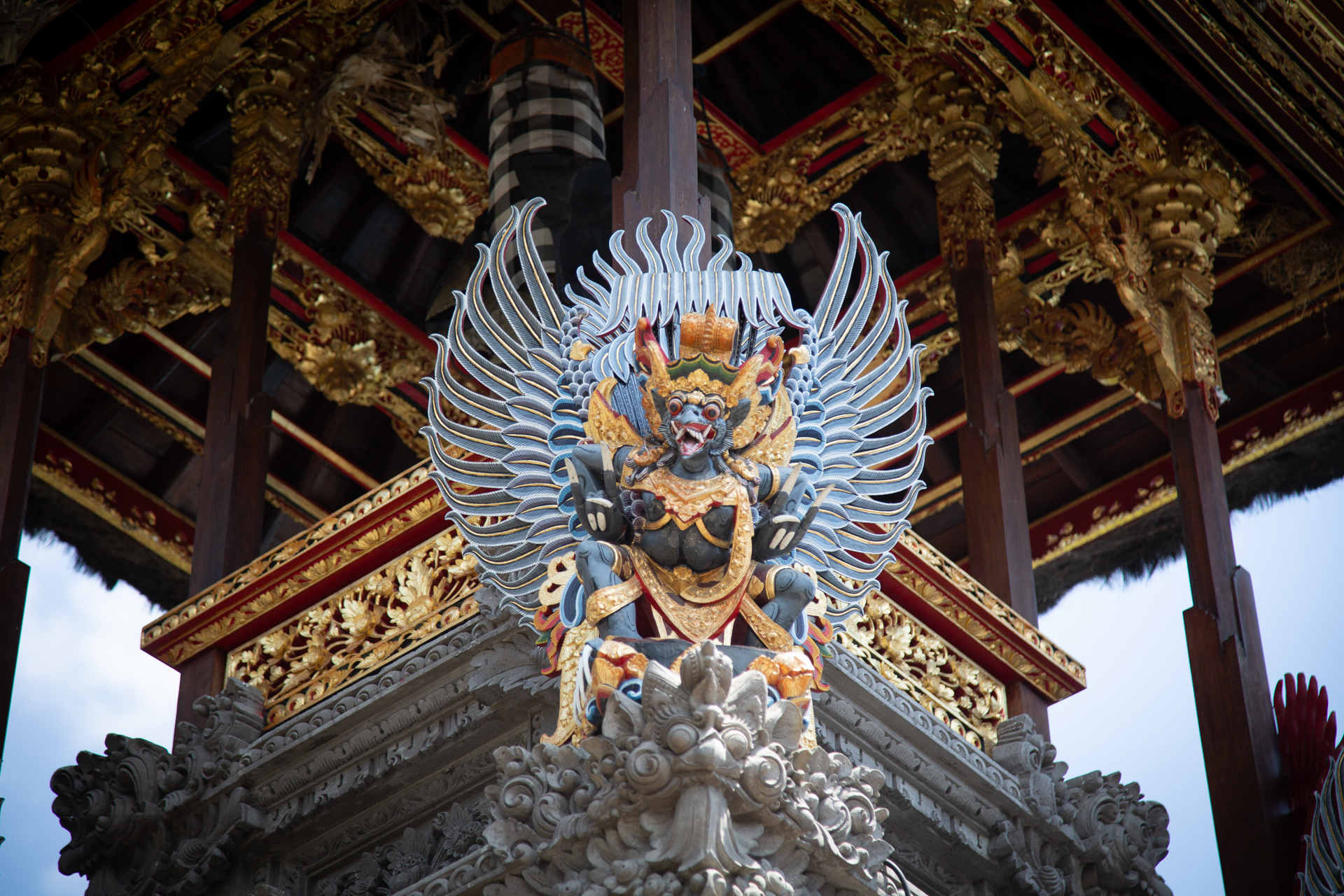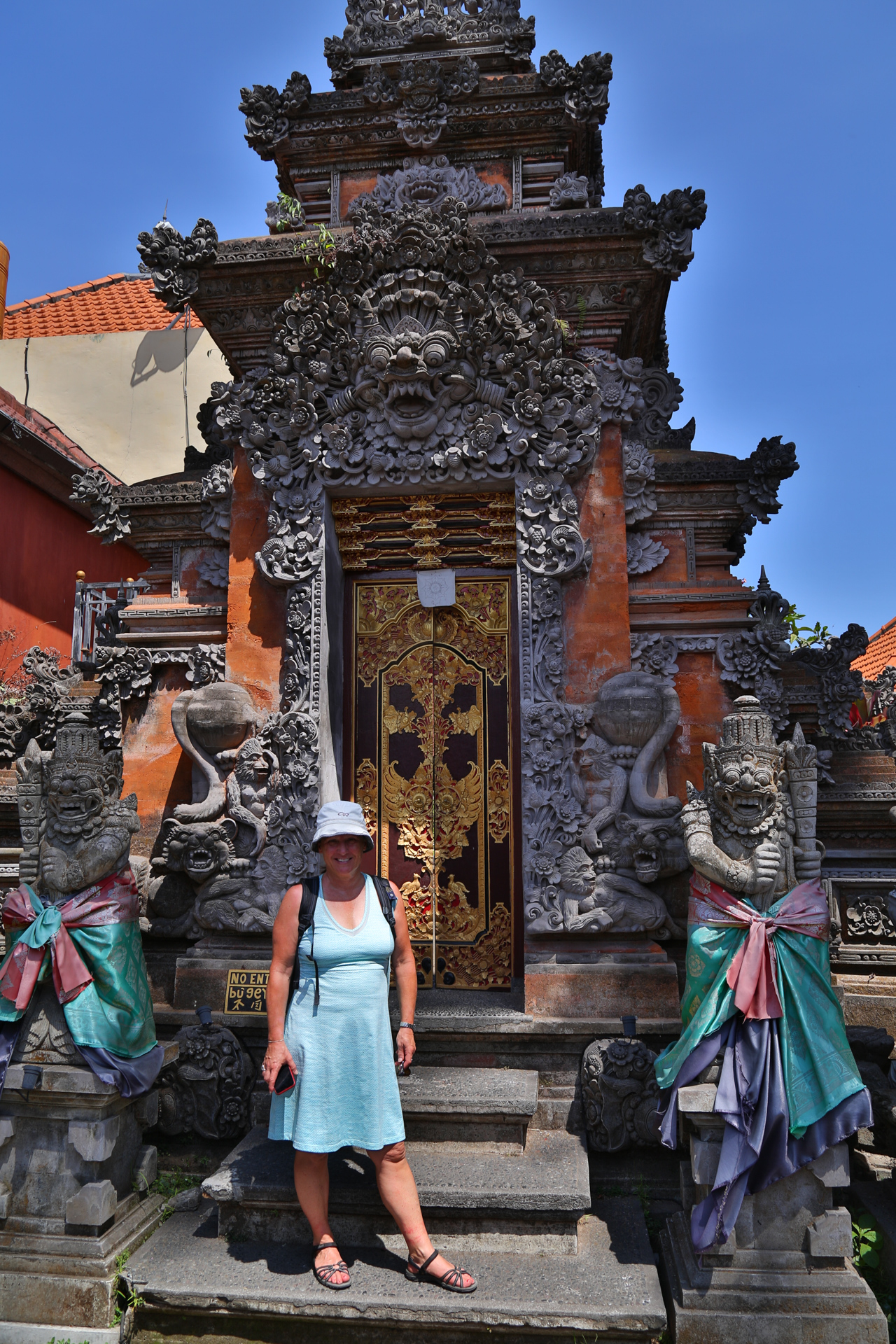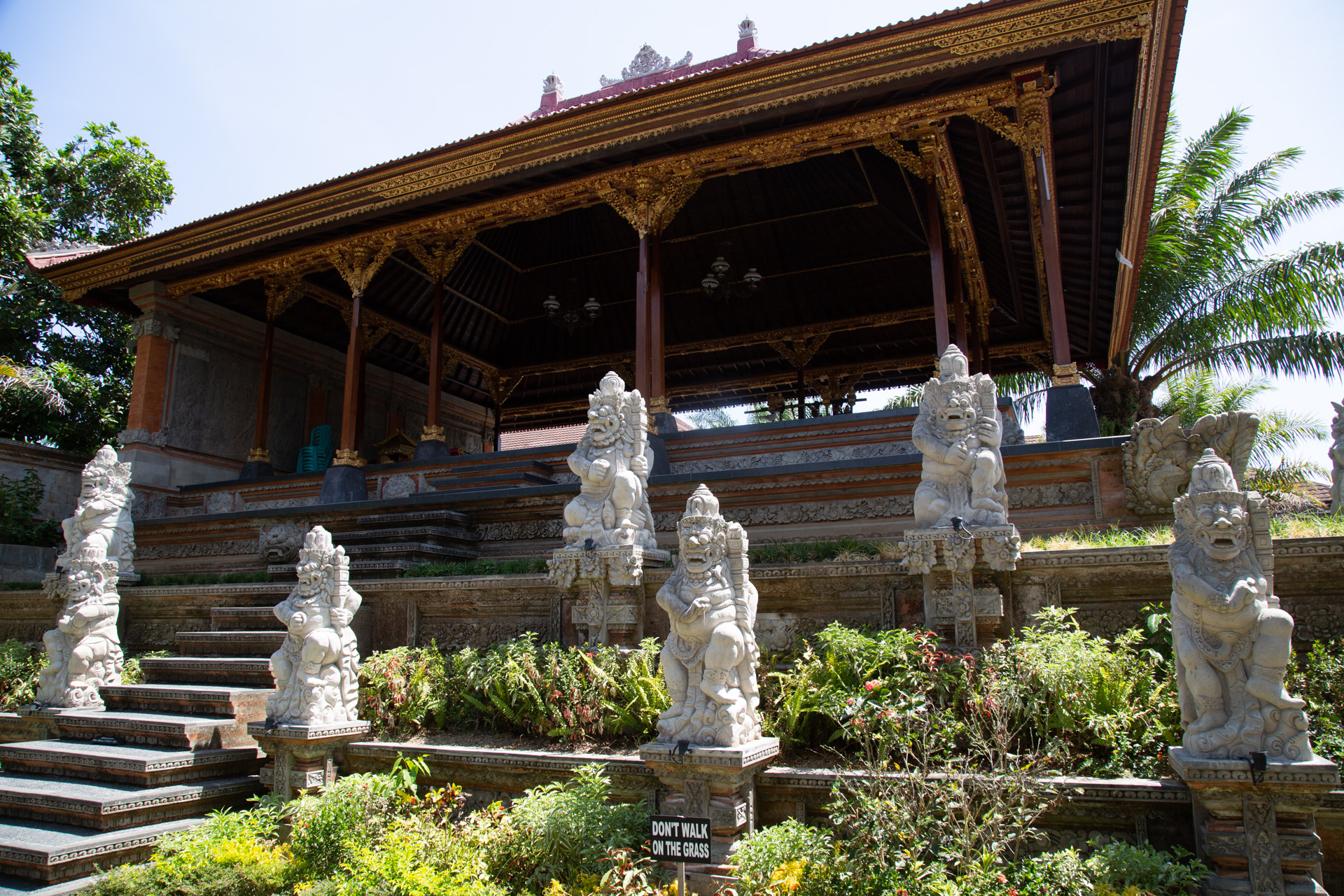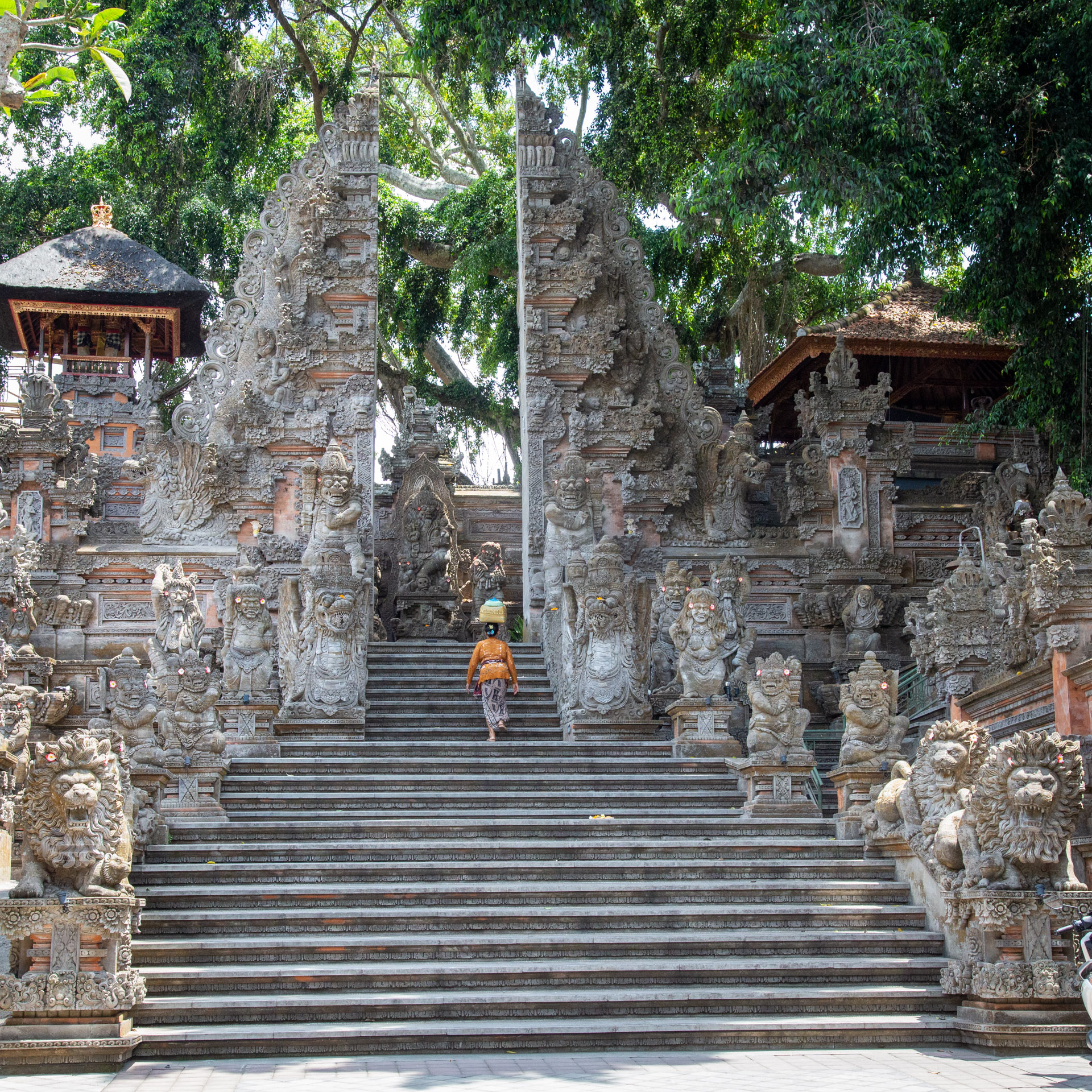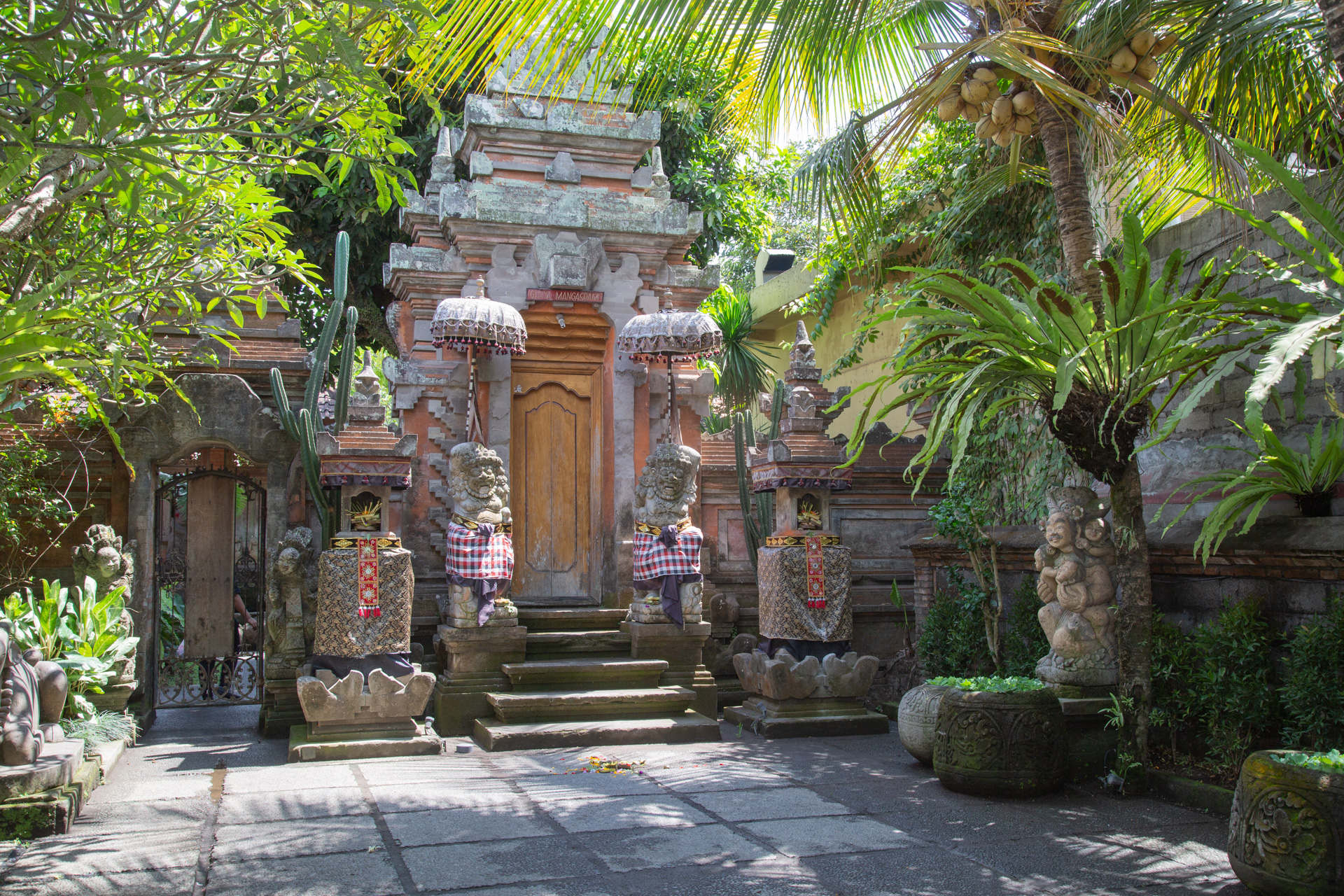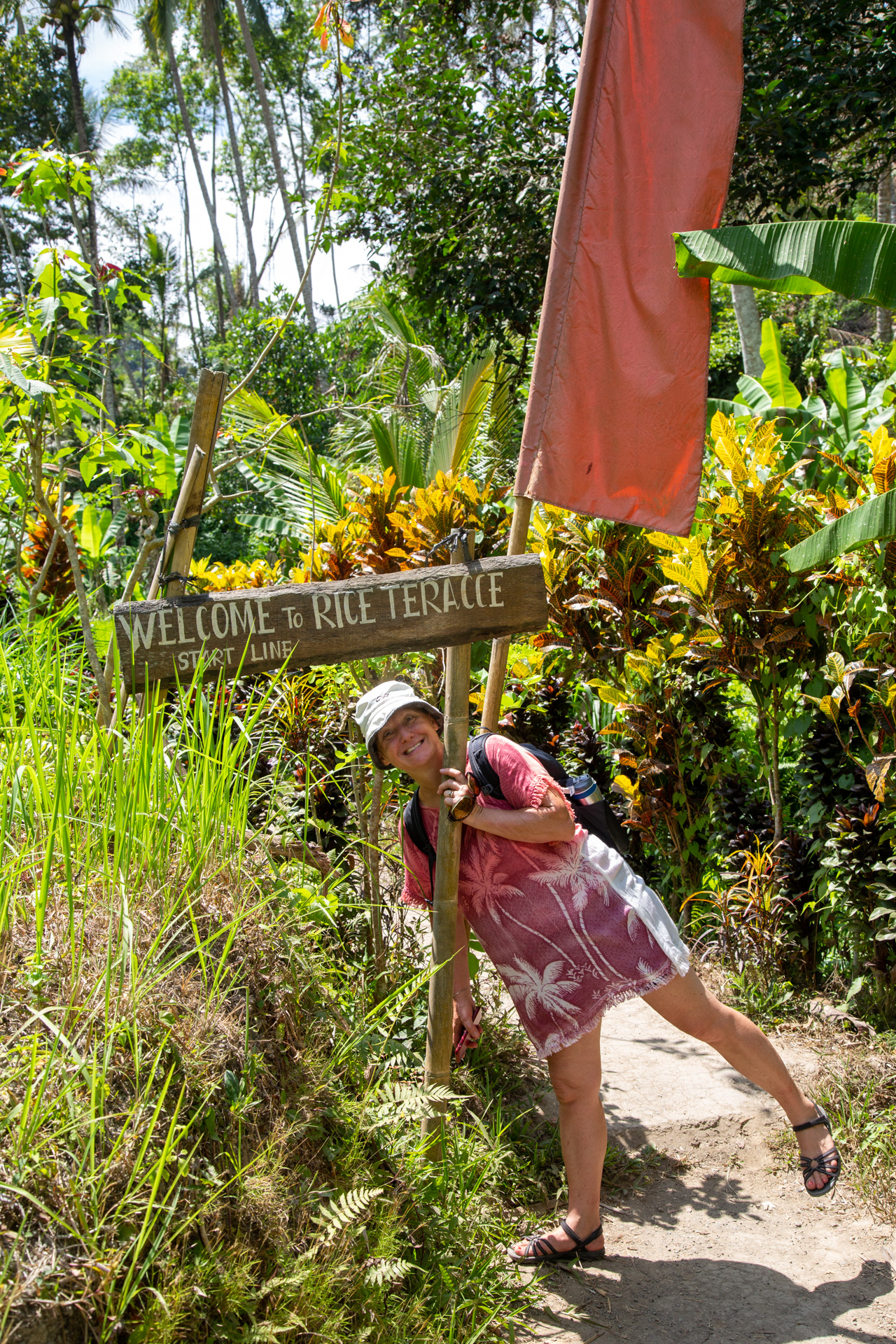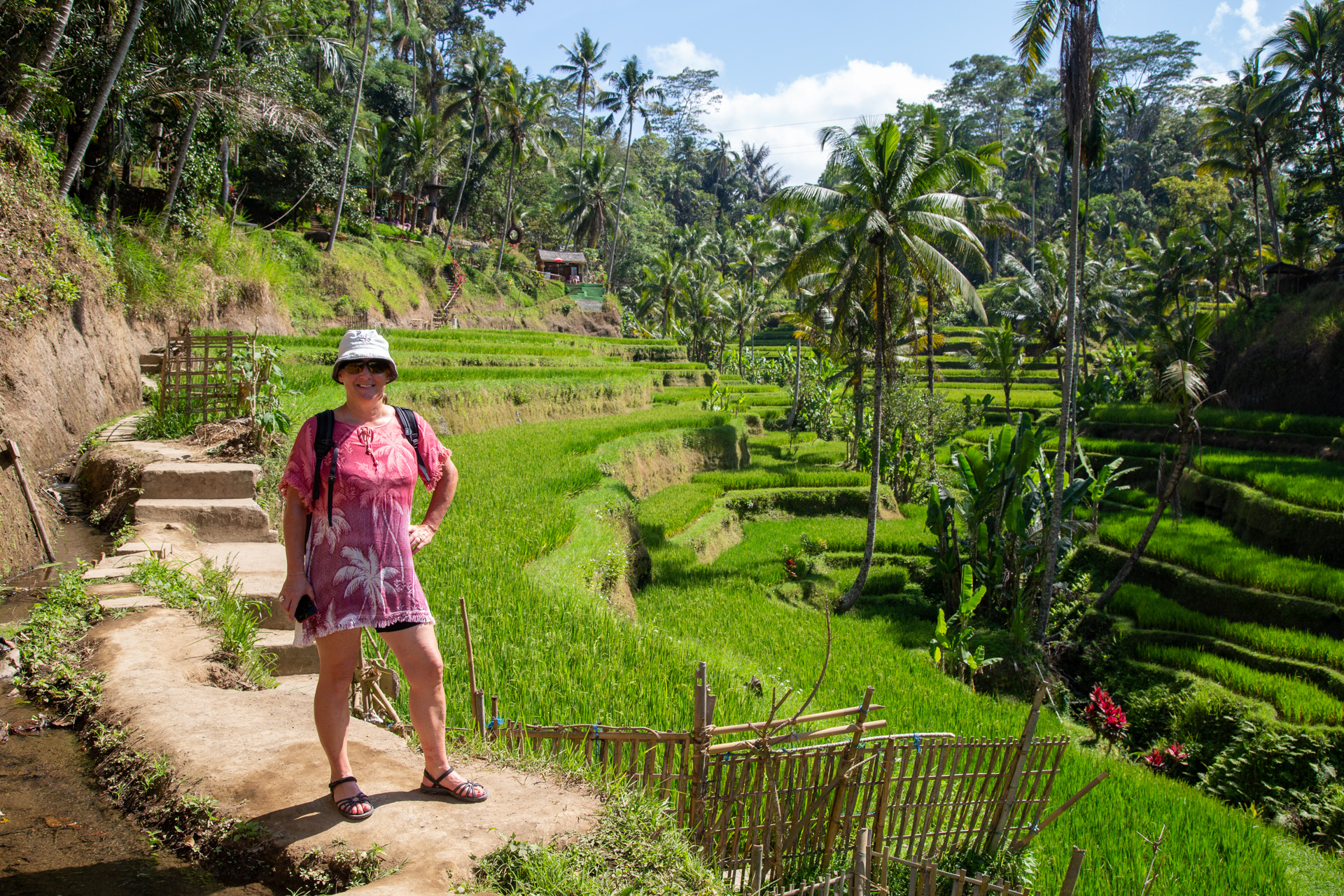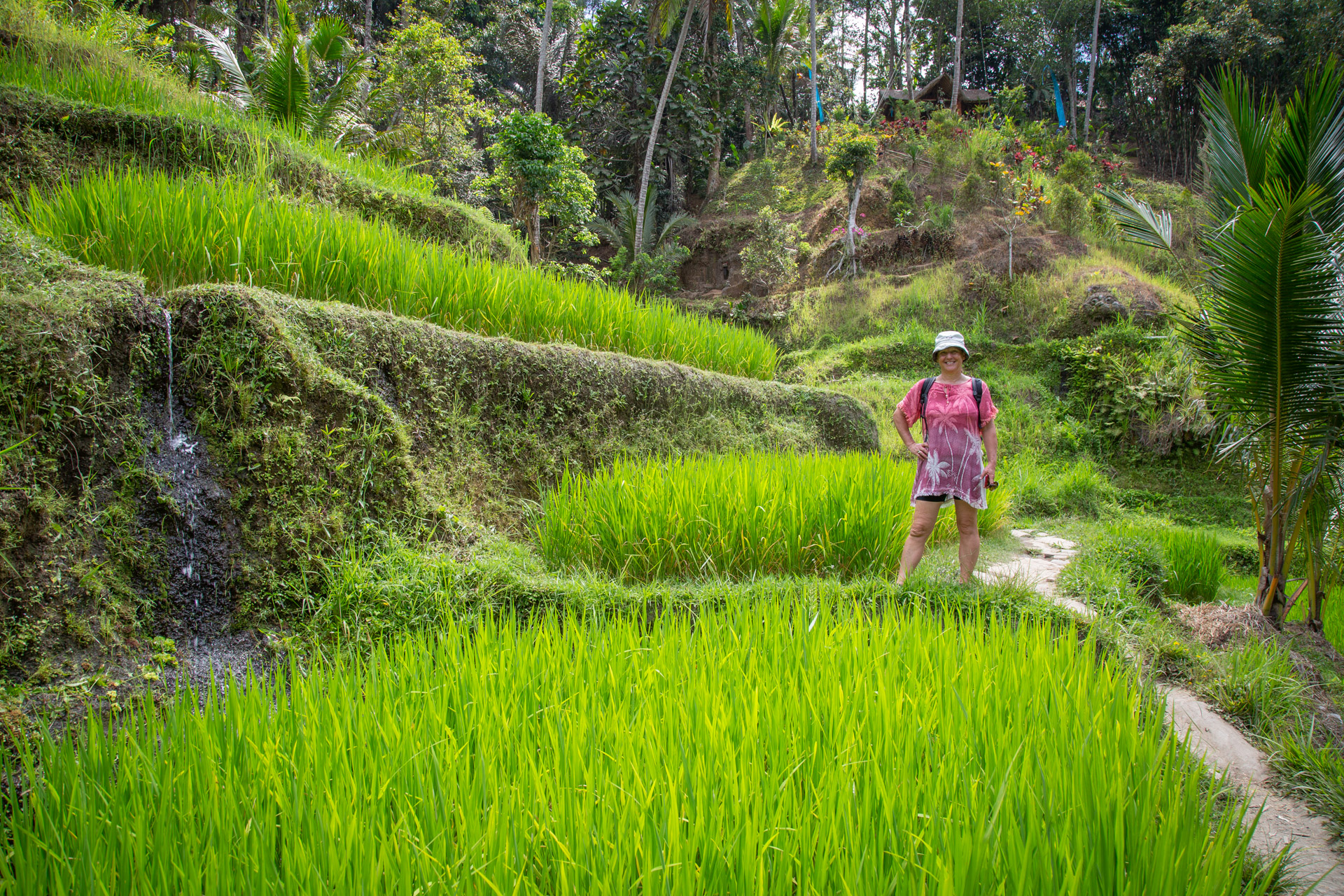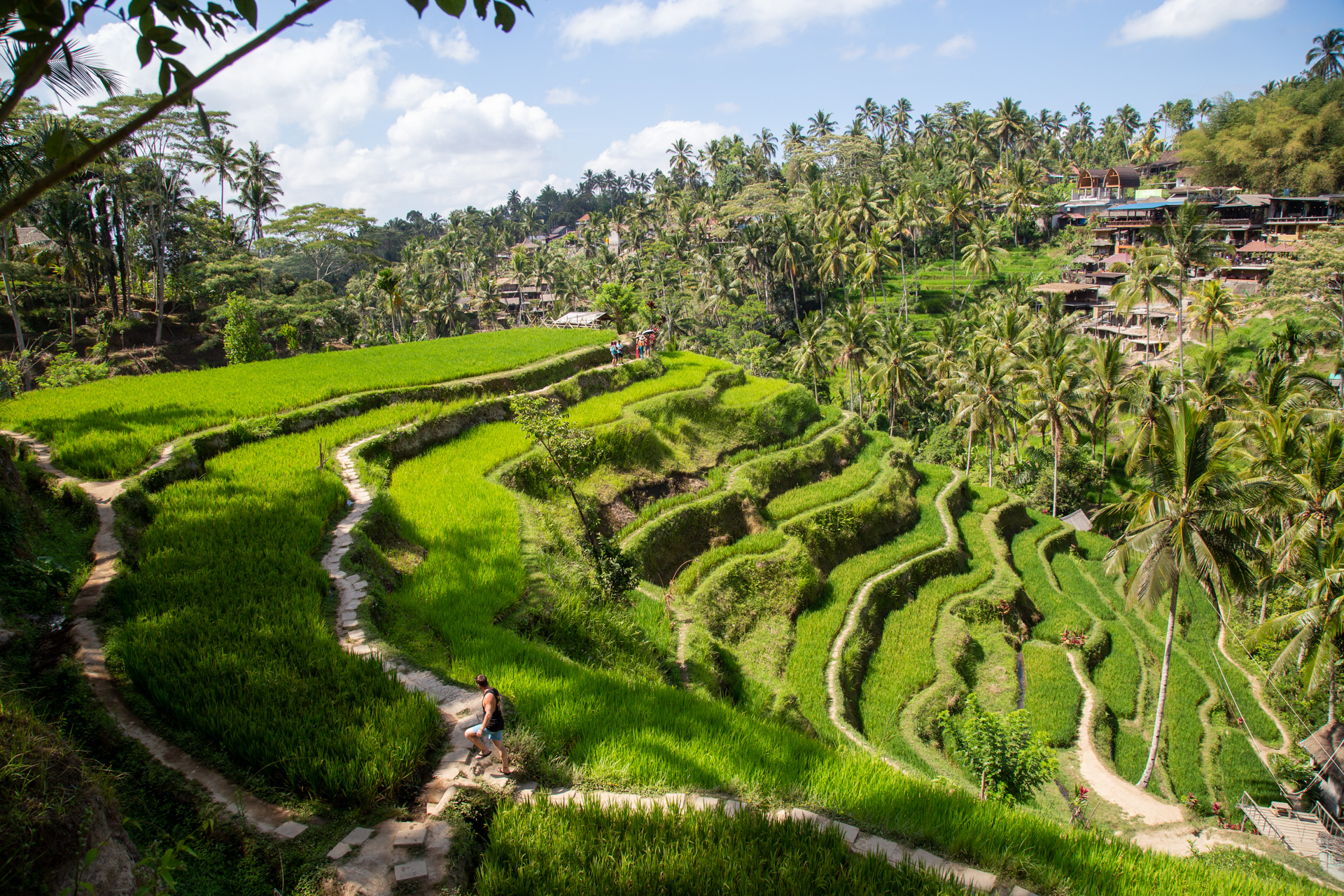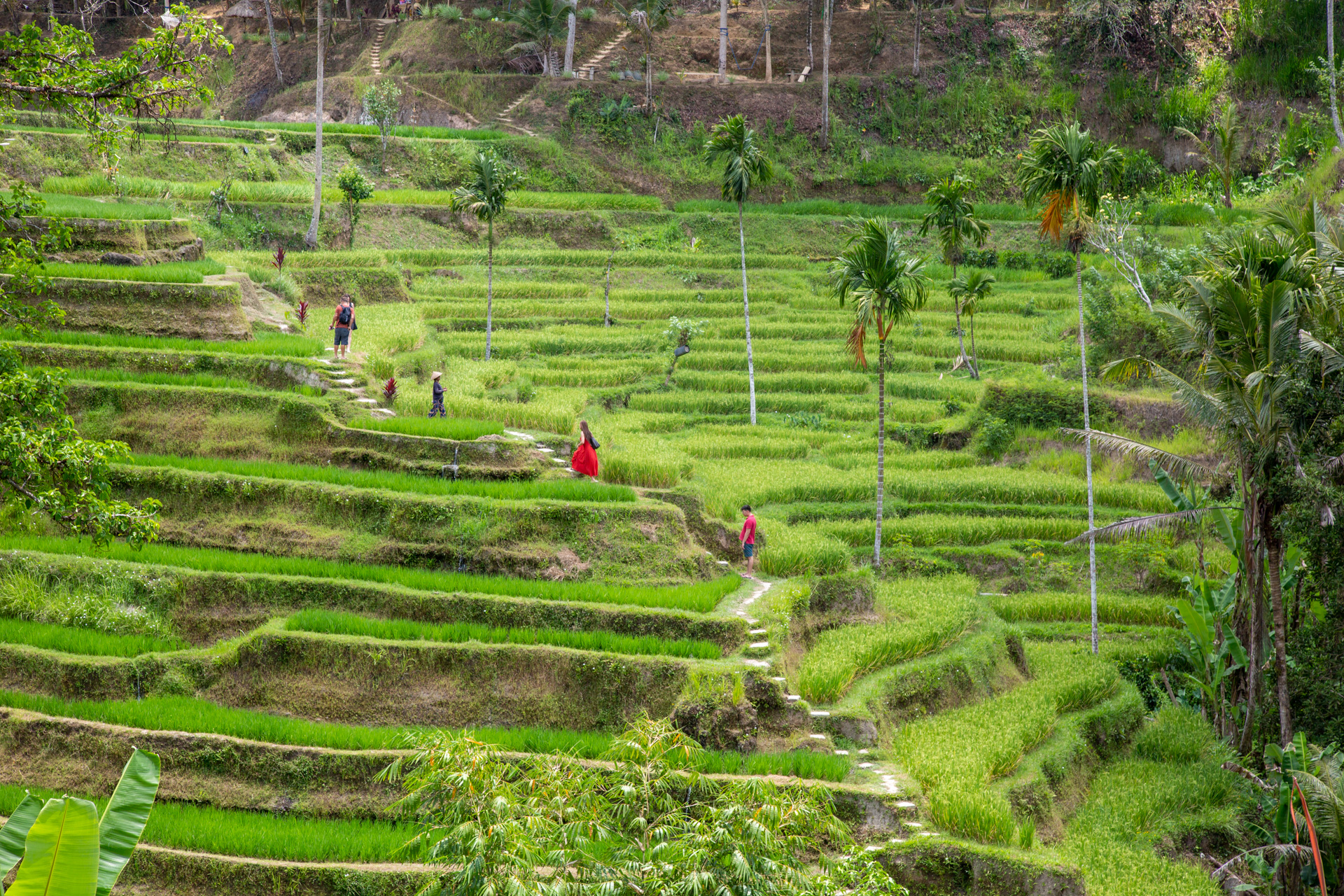Just the mention of Bali evokes images of a paradise – isolated expanses of powdery white sand beaches, wooden bungalows overlooking turquoise waters, stunning rainforests, and exotic temples and shrines. I’m talking about the Bali that is romanticized in movies and literature like “Eat, Pray, Love”. Sadly, this may have been an accurate description of Bali 20-30 years ago, but today, with tourism at an all time high, many areas such as Kuta and Seminyak are tourist meccas with all the accoutrements that go with it – western style bars and restaurants (with accompanying western prices), large hotels and resorts, filthy beaches, and drunk tourists.
Having been forewarned of this dismal truth, we chose to head inland, to the town of Ubud, which is located in the uplands of Bali. It is known as a center for traditional crafts and dance. Surrounded by rainforest and terraced rice paddies, dotted with Hindu temples and shrines, Ubud offers some of Bali’s most famous and most photographed landscapes. Lonely Planet 2019 describes Ubud as “a place where traditional Balinese culture imbues every waking moment, where colourful offerings adorn the streets and where the hypnotic strains of gamelan are an ever-present soundtrack to everyday life. It’s also somewhere that is relentlessly on trend – a showcase of sustainable design, mindfulness, culinary inventiveness and the very best that global tourism has to offer. Come here for relaxation, for rejuvenation and to have what may well be the most magical holiday of your life.”
So with cautious optimism we booked four nights in a beautiful Balinese bungalow for a mere $29 per night (via AirBnb) and prepared to be wowed by Bali. From the moment we landed, chaos surrounded us. Long, slow lines through customs/immigration, followed by further chaos as we made our way through the throngs of aggressive taxi drivers offering us their services as we searched for our Grab driver outside of the airport. It took almost 2 hours to travel the 37 km to Ubud because of the congested roadway and traffic jams.
There were hints of the renowned artisan culture as we passed by an endless array of shops and businesses. Our driver explained in very limited English that each district specialized in a particular art, such as stone statues (think temples and buddhas), wooden sculptures, paintings, silver and gold jewelry. It was fascinating to see yet the level of commercialism was staggering. Thousands of stone hindi statues lined the streets. Our hearts began to sink as we realized this looked like many of the other developing countries we have visited – grungy, dirty, filthy poor, depressing.
Thankfully, our accommodations were a peaceful haven, set back from a busy road, offering tranquility and comfort. After a good night’s sleep, we set out to find and explore this magical place called Ubud. What we found instead was a town overrun with tourists – over 3 million visitors come to Ubud each year! – unrelenting traffic, pollution and noise.
While we never did find the magic, we did observe the spiritual nature of the local Balinese population. Every Balinese home was adorned with an ornate temple, to which blessings in the form of flowers, rice, and other edibles were offered each day. The local people we met were gentle in nature, kind in spirit and very welcoming.
During our 4 days in Ubud, we explored the local sights and indulged in delicious Indonesian cuisine.
While Ubud may not have been the utopia we were searching for, it certainly was a shopping paradise. From high end shops to the local kitschy market, there was surely something to please even the most discriminating shopper. Even I, a reluctant shopper at best, was tempted by the vast array of merchandise on offer. In the end, practicality won over consumerism as I realized any trinkets I bought would have to be lugged around for the next six months.
Sacred Monkey Forest: Within town limits, this attraction was so easy to walk to. While this is pretty touristy, it was still fun to watch all the monkeys and their antics. The park was larger than I expected and had some pretty interesting temples on site. These temples were not just for show, and they are off limits to tourists. A steady stream of locals were entering the temples with their offerings perched high on their heads. One temple was dedicated to cremating the dead according to the local custom where the dead from certain villages are buried temporarily, and then once every five years, all the graves are dug up and the bodies are burned in the temple.
Royal Palace: Right on the main road in the middle of town, this was a beautiful temple to meander through and take a few pictures. It was super busy when we were there so it was hard to take pictures without being photo bombed by other tourists. While the Royal Palace was impressive, there are temples everywhere in Ubud. They are so commonplace, Chris said that if you spit, you could hit no less than four of them! And that is not an exaggeration.
Campuhan Ridge Walk: This was an easy hiking trail on the outskirts of town offering sweeping hilltop views. The views were not all that impressive, I think largely due to the dry conditions and resulting dead vegetation. I am sure this area would look much more lush during the rainy season.
Tegalalang Rice Terraces: Reputed to be one of the most visited attractions in Ubud, we were pleasantly surprised to find few tourists at the rice terraces during our visit. Only 10 km outside of town, this was well worth the trip. We spent a couple of hours walking along narrow pathways through the terraced hillside cultivated with rice paddies amid lush greenery. There was a photo op around every bend.
Sadly, this area too is being ruined by tourism. There is now zip lining across the valley, and so many swings to choose from. We saw local farmers walking around with empty baskets offering a photo op to any paying tourist. We were told that it is now more lucrative for farmers to pose for tourists than to actually work in their rice fields.
Following a tip from a fellow traveller who we met the night before, we spent the rest of the afternoon at a newly opened restaurant (Tis) at the edge of town. The view was breathtaking, the food and drink were top notch, and the resort style infinity pool was so refreshing. Finally a little piece of paradise!
But by the end of our stay, we craved peace and quiet, and beautiful surroundings, so we made the decision to head to Bali’s neighbouring island, Lombok, reputed to be more like the Bali of 30 years ago. That sounded just about right for us.


